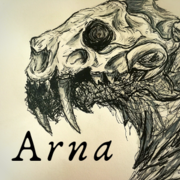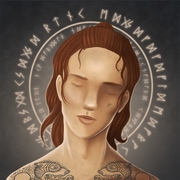Creepypasta
According to Wikipedia, "Creepypastas are horror-related legends that have been shared around the Internet. Creepypasta has since become a catch-all term for any horror content posted onto the Internet. These Internet entries are often brief, user-generated, paranormal stories intended to scare readers. They include gruesome tales of murder, suicide, and otherworldly occurrences. The subject matter of creepypasta varies widely and can include topics such as ghosts, murder, zombies, and haunted television shows, and video games. Creepypastas range in length from a single paragraph to lengthy, multi-part series that can span multiple media types.
In the mainstream media, creepypastas relating to the fictitious Slender Man character came to public attention after the 2014 "Slender Man stabbing", in which a 12-year-old girl was stabbed by two of her friends; the perpetrators claimed they "wanted to prove the Slender Man skeptics wrong." After the murder attempt, some Creepypasta website administrators made statements reminding readers of the "line between fiction and reality".
Other notable creepypasta stories include Ben Drowned, Jeff the Killer, Ted the Caver, Sonic.exe, and the Grandfather of all Creepypasta stories, Slender Man. "
Etymology
"Creepypasta is a portmanteau of the words creepy and copypasta; the term was coined on the imageboard 4chan around 2007. Copypasta denotes viral, copied and pasted text; the term was coined on 4chan around 2006."
History
"The exact origins of creepypasta are unknown. Early creepypastas were usually written anonymously and routinely re-posted, making the history of the genre difficult to study. Jessica Roy, writing for Time, argued that creepypastas emerged in the 1990s when the text of chain emails was reposted on Internet forums and Usenet groups. Aja Romano, writing for the Daily Dot, stated that Ted the Caver was arguably the earliest example of creepypasta. The story, posted on Angelfire in 2001, was written in the first person from the perspective of Ted as he and several friends explored an increasingly frightening cave system.
Many early creepypastas consisted of rituals, personal anecdotes, and urban legends such as Polybius and Bunny Man. Darcie Nadel, writing for TurboNews, argued that these early creepypastas had to be somewhat believable and realistic to be re-posted. Many of the earliest creepypastas were created on the /x/ board of 4chan, which focused on the paranormal.
Major dedicated creepypasta websites started to emerge in the late 2000s to early 2010s: Creepypasta.com was created in 2008, while the Creepypasta Wiki and r/NoSleep (a Reddit forum, or subreddit) were both created in 2010. The websites created a permanent archive of creepypasta, which profoundly impacted the genre. Many authors started using creepypasta characters in their own stories, which resulted in the development of continuities encompassing numerous works.
According to Time magazine, the genre had its peak audience in 2010 when it was covered by The New York Times.
The definition of creepypasta has expanded over time to include most horror stories written on the Internet. Over time, authorship has become increasingly important: many creepypastas are written by named authors rather than by anonymous individuals. Many of these authors attempt to achieve notice through their Creepypasta. The copying and pasting of Creepypastas has become less common over time; doing so is seen as intellectual theft by many members of the Creepypasta community."












Comments (0)
See all